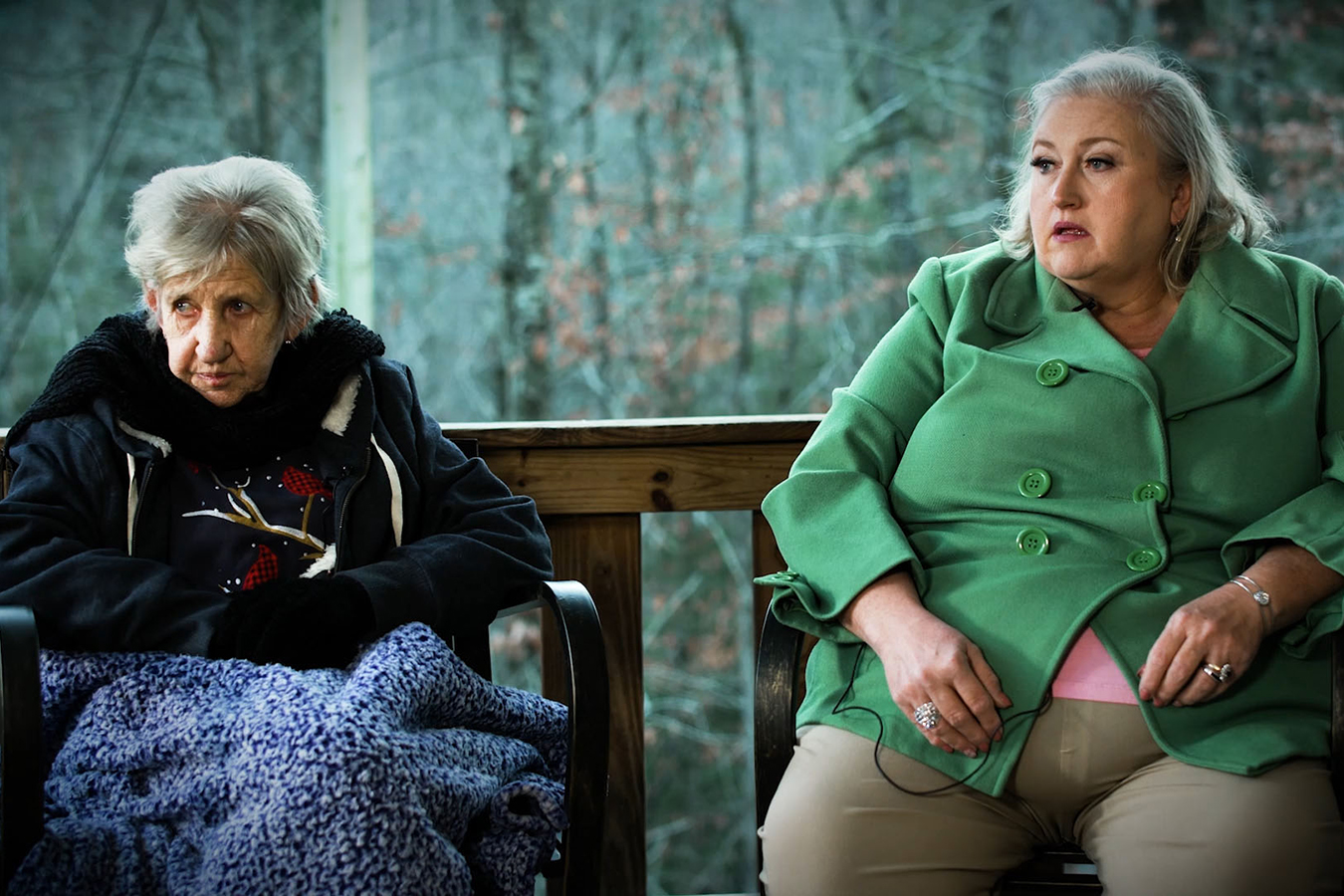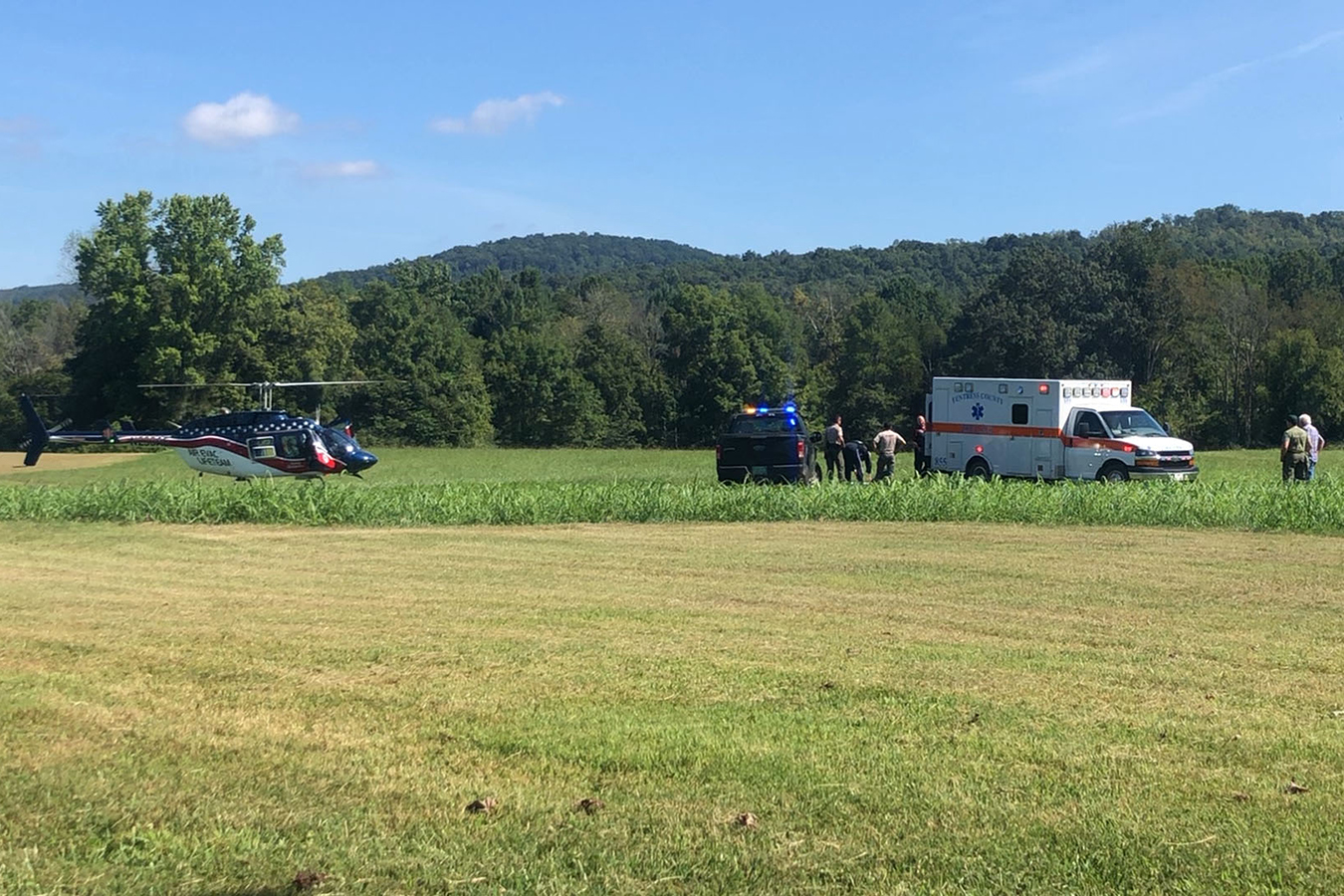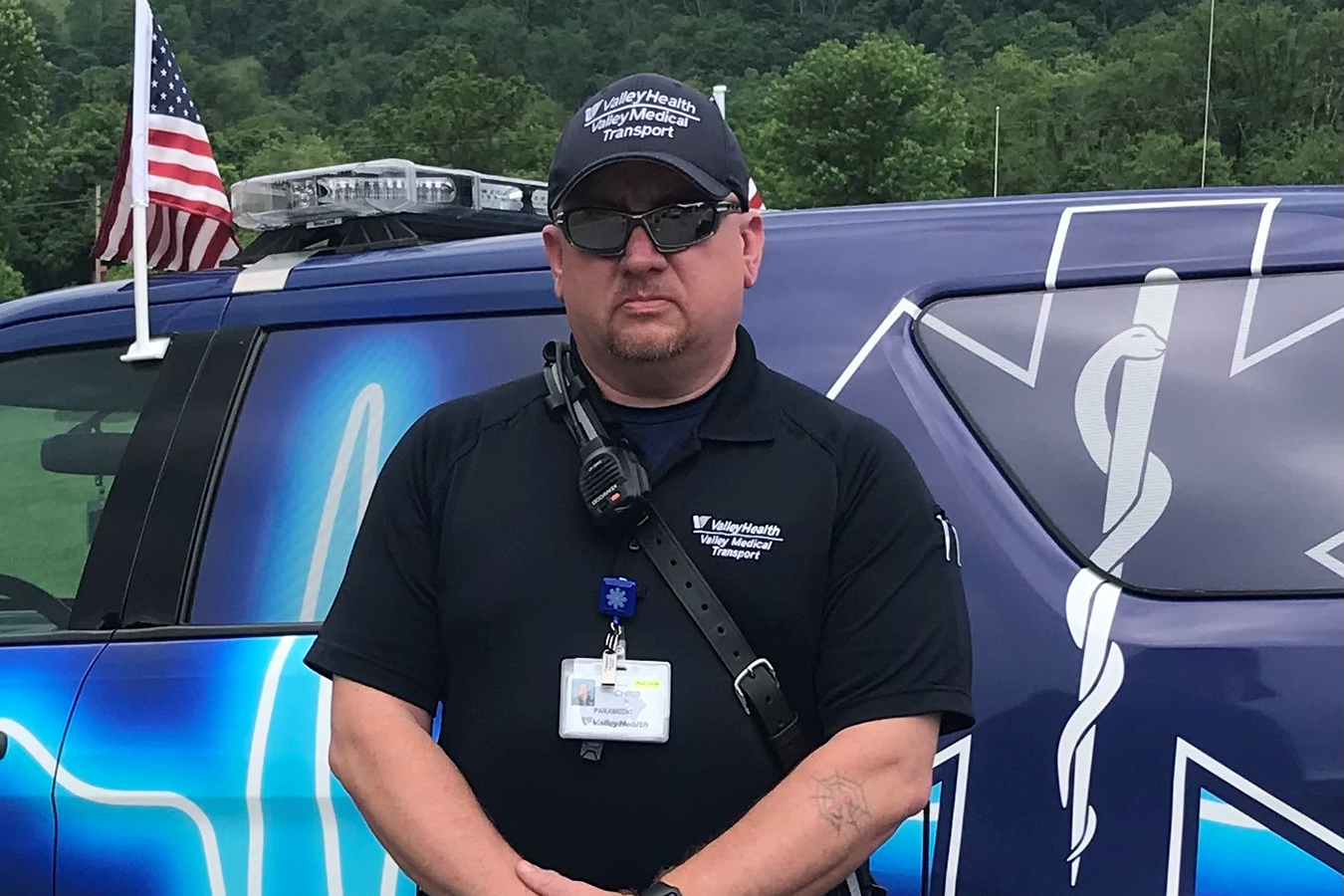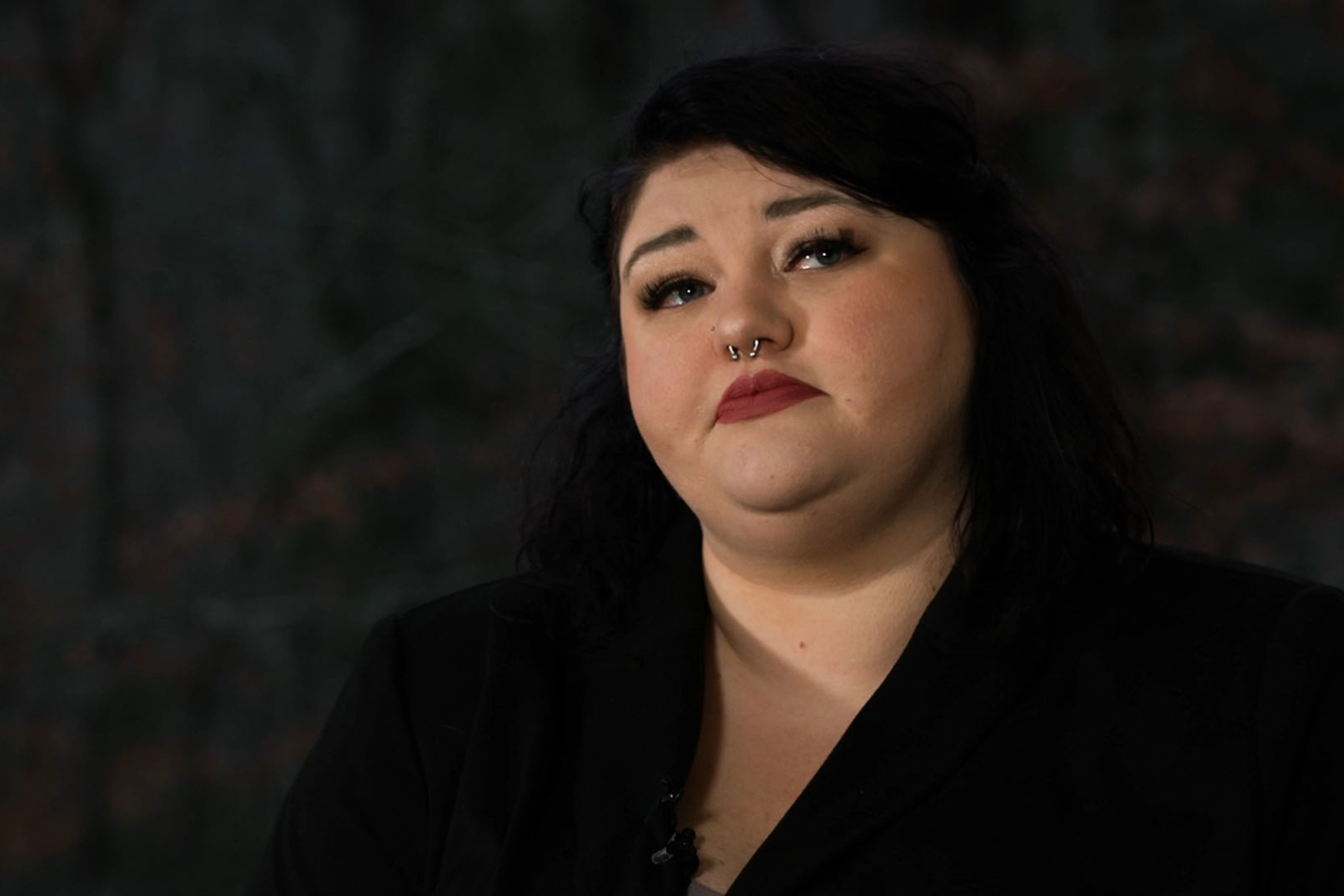Una mañana de verano en 2019, Debbie Cook estaba todavía en pijamas cuando recibió una llamada de su hijo: “Algo malo le pasa a la abuela”.

This story also ran on Investigate TV. It can be republished for free.
Por el miedo en la voz de su hijo supo que se trataba de algo serio. Marcó el 911 de inmediato, sabiendo que una ambulancia podría tardar un buen tiempo en recorrer las carreteras rurales del condado de Fentress, en Tennessee.
Se vistió y condujo a través de la granja familiar, dos puentes y un riachuelo, hasta la casa de su madre. Cook rezó para que una de las tres ambulancias que cubrían su condado de aproximadamente 500 millas cuadradas estuviera cerca.
Cuando llegó, encontró a su madre, Lottie Crouch, en el baño, incapaz de pararse o caminar. Cook, quien es enfermera licenciada, reconoció rápidamente los signos: cara torcida, un lado de la boca caído.
Su mamá estaba sufriendo un accidente cerebrovascular (ACV, también llamado ataque cerebral).
“Me quedé petrificada”, recordó Cook, quien comenzó su carrera trabajando con pacientes en rehabilitación tras accidentes cerebrovasculares, y sabía que obtener la atención adecuada rápidamente podría hacer la diferencia entre la vida o la muerte. O una gran diferencia en la calidad de vida de su madre. Crouch tenía 75 años, todavía estaba enérgica y le encantaba hacer cosas como prepararse sopa. Para seguir viviendo la vida que Crouch conocía, cada paso hacia la atención adecuada, en un área rural, tenía que salir bien.
Cuando llegaron los paramédicos, la pregunta crucial fue: ¿A dónde llevarían a Crouch para que recibiera atención?

En todo el país, cerca de 800,000 personas sufren accidentes cerebrovasculares cada año. El problema es particularmente grave en las regiones de los Apalaches y el delta del Mississippi, donde más del 80% de los condados tienen tasas de muerte por ACV superiores al promedio nacional. Muchos de estos condados también enfrentan altos índices de pobreza y albergan a poblaciones de adultos mayores vulnerables. Tienen escasez de proveedores médicos o han visto cerrar hospitales locales.
En Tennessee, 2 millones de personas, casi un tercio del estado, están en la situación de Crouch: viven a más de 45 minutos de un hospital certificado para el tratamiento de accidentes cerebrovasculares y capaz de brindar la atención más avanzada, según un nuevo análisis de KHN e InvestigateTV.
Y las tasas son aún más altas en los estados del delta como Arkansas y Mississippi, donde más de la mitad de los residentes deben conducir más de 45 minutos hasta estos centros especializados.
<![CDATA[
window.addEventListener('message', function(event) { if (typeof event.data['datawrapper-height'] !== 'undefined') { var iframes = document.querySelectorAll('iframe'); for (var chartId in event.data['datawrapper-height']) { for (var i=0; i
El análisis es parte de un proyecto de un año llamado Bridging the Great Health Divide, durante el cual KHN y el equipo de investigación nacional de Gray Television, InvestigateTV, investigan los problemas de salud que históricamente han plagado a estas regiones. Y los accidentes cerebrovasculares son los principales. A pesar de los avances médicos en la atención de estos ataques, enviar a los pacientes de las zonas rurales de los Apalaches y el delta del Mississippi a las instalaciones adecuadas es un intrincado rompecabezas.
"No existe una única respuesta correcta para todos los pacientes", dijo el doctor Raul Nogueira, neurólogo intervencionista del Grady Memorial Hospital en Atlanta, Georgia. El lugar donde se debe cuidar a un paciente "realmente depende del tiempo de viaje", dijo. "Todo es cuestión de tiempo".
Durante años, el consejo para los pacientes con ACV ha sido llegar al hospital más cercano lo antes posible. Esta emergencia interrumpe el flujo sanguíneo a una parte del cerebro y, cuanto antes se lo pueda restaurar, mejor. Entonces, la idea ha sido llevar a los pacientes a un médico, cualquier médico, rápidamente.
Pero ahora, ese consejo está evolucionando. Investigaciones muestran que algunos pacientes con ACV se benefician más de los procedimientos avanzados que suelen realizar especialistas en grandes centros médicos. Por eso, el nuevo objetivo es llevar a los pacientes al médico adecuado en el hospital adecuado lo antes posible.
En algunos casos, eso no significa la instalación más cercana. Para los pacientes con accidentes cerebrovasculares graves, en los que un coágulo está bloqueando a una de las arterias principales del cerebro, las asociaciones médicas recomiendan viajar hasta 30 minutos adicionales en áreas urbanas y 60 minutos en áreas rurales para llegar a un hospital con capacidad de tratar un ataque cerebral con técnicas avanzadas.
Si bien eso es bastante fácil en una ciudad donde hay muchos hospitales, en áreas rurales como el condado de Fentress, la cuestión de dónde llevar a un paciente se ha vuelto cada vez más complicada.
Grandes decisiones, poco tiempo
Cuando Lottie Crouch tuvo su accidente cerebrovascular, el que habría sido el hospital más cercano, a menos de 20 minutos, había cerrado dos meses antes. Es uno de los 136 hospitales rurales en todo el país que han cerrado desde 2010, incluidos casi tres docenas en Appalachia y el delta.
Eso significaba que, para Crouch, el hospital estatal más cercano estaba a casi 45 minutos en auto, y los centros médicos con la atención más avanzada estaban a más de una hora. Eso hizo que los servicios de emergencias médicas se esforzaran por transportar a los pacientes más lejos.
Cada paso en el proceso para conseguir que alguien que había sufrido un derrame cerebral recibiera la atención adecuada en el tiempo adecuado se había vuelto más complejo.
Las decisiones del momento rara vez son claras, dijo Nogueira. Si un paciente tiene un accidente cerebrovascular severo, podría beneficiarse de ir a un centro médico grande donde pueda someterse a una cirugía de inmediato, agregó. Detenerse en un hospital más pequeño que no puede realizar ese procedimiento podría retrasar innecesariamente la atención.
Pero si el ataque es menos grave, podría ser mejor ir primero a un centro más cercano en donde el paciente podría recibir medicamentos para disolver el coágulo antes, dijo Nogueira. Así, evitaría facturas médicas innecesarias por un viaje largo, desde $500 por un viaje en la parte trasera de una ambulancia regular hasta $50,000 por un helicóptero. Y la familia podría ahorrar el tiempo y el dinero que implica visitar al paciente en un hospital lejano.
El problema es que los socorristas no necesariamente pueden saber qué tan grave es un derrame cerebral con solo mirar a alguien. Por lo tanto, se basan en una evaluación de los síntomas del paciente para tomar la mejor decisión.
A Jamey Beaty, un paramédico en el condado de Fentress que respondió a la casa de Lottie Crouch, le pesan la gravedad de estas decisiones.
"Cuando estás solo en la parte trasera de una ambulancia y tienes un paciente que se está muriendo, lo único en lo que puedes pensar es: ¿Cómo puedo mantener vivo a este paciente hasta que pueda llevarlo a alguna parte?", dijo Beaty. "Eso es todo lo que se te pasa por la cabeza".
Cada vez que Beaty recibe una llamada por un ataque cerebral, su primera respuesta es mirar al cielo.
Desde que cerró el hospital local, una ambulancia aérea es la forma más rápida para que el paciente llegue al lugar del tratamiento. Afortunadamente, el día que Lottie Crouch tuvo su ataque, el cielo de Tennessee estaba azul claro. Crouch fue trasladada casi 100 millas a un hospital en Knoxville con servicios avanzados para accidentes cerebrovasculares.

Viajes largos hacia la atención avanzada
Durante las últimas dos décadas, dos tratamientos principales han hecho que avanzara la atención de los accidentes cerebrovasculares causados por un bloqueo, el tipo de ataque más común en Estados Unidos.
El primero es un medicamento administrado por vía intravenosa para disolver los coágulos en los vasos sanguíneos de los pacientes. El medicamento debe administrarse dentro de las 4½ horas posteriores al inicio de los síntomas. El segundo es un procedimiento que utiliza un catéter para remover físicamente el coágulo de los vasos de un paciente. Este tratamiento se puede realizar hasta 24 horas después del comienzo de los síntomas, pero generalmente se usa solo para accidentes cerebrovasculares graves.
En todo el país, los hospitales están certificados por niveles, en gran parte en función de su capacidad para proporcionar estos tratamientos con regularidad. Algunos hospitales no tienen certificación. Entre los hospitales certificados para accidentes cerebrovasculares, el primer nivel son los que están preparados para accidentes cerebrovasculares agudos, que pueden evaluar a los pacientes con accidente cerebrovascular, mantenerlos estables y proporcionar medicamentos anticoagulantes.
<![CDATA[
window.addEventListener('message', function(event) { if (typeof event.data['datawrapper-height'] !== 'undefined') { var iframes = document.querySelectorAll('iframe'); for (var chartId in event.data['datawrapper-height']) { for (var i=0; i
En el otro extremo del espectro están los centros integrales de accidentes cerebrovasculares, que cuentan con equipos especializados de neurólogos y neurocirujanos. Además de administrar los medicamentos anticoagulantes, estos centros pueden remover los coágulos con cirugía.
La gran pregunta es ¿a qué centro se puede y se debe llevar primero a los pacientes con ACV para que reciban la atención adecuada en un tiempo adecuado?
En Appalachia, aproximadamente el 11% de los residentes deben conducir más de 45 minutos para llegar a cualquier tipo de centro de accidentes cerebrovasculares, según el análisis de KHN e InvestigateTV. Esa proporción es aún mayor en el delta, donde casi un tercio de los residentes tienen que conducir más de 45 minutos para llegar a uno de estos centros. Otro tercio solo tiene centros de atención básica para accidentes cerebrovasculares dentro de esa distancia y necesitaría conducir más lejos para cirugías avanzadas.
Y en las partes rurales más remotas de estas dos regiones, es menos probable que las personas estén cerca de un centro de atención avanzada para accidentes cerebrovasculares.

Rural y mayoritariamente afroamericano
Si bien para muchos estadounidenses rurales como Crouch, que es blanca no hispana, es difícil llegar a tiempo al lugar adecuado para recibir la atención, las preocupaciones se agravan en los lugares con una gran población de raza negra.
Los afroamericanos tienen accidentes cerebrovasculares con más frecuencia y a edades más tempranas que sus contrapartes caucásicas. También es menos probable que reciban medicamentos anticoagulantes porque generalmente llegan al hospital fuera de la ventana del tratamiento.
En el condado de Sumter, Alabama, varias personas entrevistadas, desde el dueño de un negocio local hasta un profesor universitario y el juez de distrito, pudieron nombrar a alguien que había tenido un ataque cerebral. Más del 70% de la población del condado es de raza negra, y es una de las áreas más pobres del estado.
El único hospital dentro de las fronteras del condado no tiene certificación para ACV. Loretta Wilson, directora ejecutiva del Hospital Hill del condado de Sumter, quisiera que su centro pudiera hacer más por los pacientes con ACV. Pero los medicamentos anticoagulantes pueden costar $8,000 por dosis y el hospital no siempre puede permitirse el lujo de tenerlos a mano, dijo.
A la mayoría de los pacientes con accidente cerebrovascular se los traslada a hospitales más grandes, al menos a 30 o 40 minutos de distancia. Ese puede ser un viaje largo y costoso para muchos residentes, agregó Wilson.
Por eso, Wilson se centra principalmente en los esfuerzos de prevención. Dirige una organización sin fines de lucro que aborda problemas como la presión arterial alta, la obesidad y la diabetes, que aumentan el riesgo de una persona de sufrir un ACV. Su organización tiene alianzas con iglesias para educar a las personas sobre alimentación saludable y ejercicio, y distribuye monitores de presión arterial para que los feligreses puedan tomarse la presión ellos mismos.
"Tenemos una alta población afroamericana", dijo Wilson, quien también es afroamericana, "y esos son los que realmente necesitan los servicios".
Otras organizaciones en el condado también trabajan para educar a las personas sobre la salud cardíaca y cuándo llamar al 911. El programa de enfermería de la universidad local tiene una beca destinada a atraer a más proveedores médicos al área.
Usando telestroke para impulsar la atención rural
En los hospitales rurales, incluso si los médicos tienen acceso a medicamentos anticoagulantes, pueden dudar en administrarlos por temor a dañar al paciente. En raras ocasiones, alrededor del 2% al 7% de los casos, los medicamentos pueden causar sangrado cerebral.
Pero no usar las drogas también puede tener consecuencias. Un estudio nacional publicado en 2020 encontró que los pacientes con accidente cerebrovascular tenían menos probabilidades de recibir esos medicamentos en hospitales rurales que en los urbanos, y los pacientes con estos ataques tenían más probabilidades de morir en hospitales rurales.
Los programas de telestroke pueden ayudar a cerrar esa brecha, explicó la doctora Amelia Adcock, neuróloga de WVU Medicine en West Virginia y jefa de la red de telestroke del sistema.
Al conectar a médicos de hospitales más pequeños, a menudo rurales, con un especialista de guardia en un gran centro médico, los programas permiten que las personas “compartan la carga de la toma de decisiones”, dijo Adcock. Y la responsabilidad.
El doctor Michael Gould es médico de medicina de emergencia en el Hospital Potomac Valley de 25 camas en la zona rural del norte de West Virginia. Su hospital no está certificado para accidentes cerebrovasculares y no cuenta con un neurólogo de planta. Dijo que administrar medicamentos anticoagulantes es "una de las decisiones de la medicina que me pone más nervioso".
Pero consultar con neurólogos en el centro de Medicina de WVU a unas 80 millas de distancia en Morgantown le ha dado más confianza, dijo. Gould estimó que ahora administra los medicamentos una o dos veces al mes.
Un estudio de la red de telestroke de WVU Medicine halló que el número de pacientes con accidente cerebrovascular que recibieron medicamentos anticoagulantes casi se duplicó durante los primeros tres años del programa.
El otoño pasado, Christopher Green estaba haciendo las compras cuando de repente sintió un fuerte dolor de cabeza y perdió la visión periférica. Green, un veterano paramédico, reconoció de inmediato lo que estaba sucediendo. "Oh, Dios mío, estoy sufriendo un ataque cerebral", recuerda haber pensado. Lo llevaron al hospital de Gould y el personal de emergencias inmediatamente puso en marcha el programa de telestroke.

En 30 minutos, Green consiguió medicamentos para disolver el coágulo en sus vasos. "Un resultado de libro de texto", dijo Green, quien ha respondido a muchas llamadas al 911 por accidentes cerebrovasculares.
Rememorando, Green dijo que probablemente habría llevado a un paciente en su situación a un hospital más lejano que estuviera certificado para accidentes cerebrovasculares. Pero experimentar el programa de telestroke en carne propia cambió su perspectiva.
"Ahora veo que retrasar el tratamiento de 20 a 30 minutos marca la diferencia entre tener una solución completa o algún tipo de efecto residual", dijo.
“¿Qué pudo haber sido?”
De vuelta en Tennessee, Debbie Cook estaba agradecida de que a su madre la hubieran llevado al centro de atención avanzada para accidentes cerebrovasculares en Knoxville. Le permitió a Lottie Crouch recibir el tratamiento que necesitaba para poder llevar una vida mayormente independiente.
Pero la distancia le pasó factura a la familia. Cook, su hermana y su hija se turnaron para conducir casi dos horas de ida y dos de vuelta para pasar la noche con Crouch en el hospital.
Después de 10 días, cuando Crouch fue trasladada a un centro de rehabilitación más cercano a su casa, la familia sintió una sensación de alivio. Podrían llevarle pastel de carne y dumplings de moras silvestres para la cena. Y "un montón de caramelos de menta", recuerda Crouch, su favorito.
Aunque Crouch ahora está sana, y en casa, su nieta de 27 años, Haelee Stockton, todavía está obsesionada de solo pensar lo que podría haber sucedido ese día. Si los paramédicos no hubieran llegado a tiempo o si el mal tiempo hubiera impedido que el helicóptero volara, es posible que su abuela no estuviera viva.
"¿Qué pudo haber sido?", se preguntó Stockton. “¿Qué tanta suerte tuvo? ¿Y cuántas personas van a tener esa suerte en el futuro?".

Aneri Pattani lideró las entrevistas y la redacción de esta historia. Hannah Recht lideró el análisis de datos y los gráficos. Daniela Molina de InvestigateTV colaboraron con la historia.
KHN (Kaiser Health News) is a national newsroom that produces in-depth journalism about health issues. Together with Policy Analysis and Polling, KHN is one of the three major operating programs at KFF (Kaiser Family Foundation). KFF is an endowed nonprofit organization providing information on health issues to the nation.
USE OUR CONTENT
This story can be republished for free (details).
Syndicated from https://khn.org/news/article/en-los-apalaches-y-el-delta-del-mississippi-millones-deben-viajar-lejos-para-recibir-atencion-por-accidentes-cerebrovasculares/
https://wp.me/p7iF68-Tf0
#Disparities, #EmergencyMedicine, #Multimedia, #NoticiasEnEspañol, #RaceAndHealth, #RuralMedicine, #States, #News

 10:57
10:57
 Annapoorna
Annapoorna










